



Page 10: ARENA LOCATOR MAP
Page 15: PERFECT SKATING

Page 16: PLAYER SPOTLIGHTS



Page 18: REFEREE SIGNALS






Page 10: ARENA LOCATOR MAP
Page 15: PERFECT SKATING

Page 16: PLAYER SPOTLIGHTS



Page 18: REFEREE SIGNALS

SANITIZE | DEODORIZE | KILL BACTERIA
Get rid of the lingering smells trapped in hockey equipment safely and effectively with our powerful, fast Ozone Treatments.

Our portable trailer is available for tournaments, wind-ups, evaluations, or camps! Treatments are delivered onsite - no need to drop off and pick up another day!
CALL 403-585-6279 OR EMAIL HELLO@BOCCINSPECTIONS.COM TO BOOK



President and Publisher: Rob Suggitt


Graphic Designers: Cailey Welk I Katelyn Suggitt
Contributing Writers
Jeremy
FreebornWelcome to our Spring Edition of the Calgary Hockey Magazine, our final edition for the 2022-2023 season.
In this issue, we have a feature interview with Canadian country music sensation George Canyon, who is the official anthem singer for the Calgary Flames. Canyon took over from Heather Liscano in the 2014-15 season and has been a fixture for the Calgary Flames ever since.
Photography Credits:
Jenn Pierce, Calgary Flames Hockey Club
Eric Boldt, Calgary Flames Hockey Club
Dave Holland SC Parker Photography
Sales Associate: Jeremy Freeborn
Administration: Amber-Lea Grmek
All Rights Reserved® - The opinions, beliefs and viewpoints expressed within do not necessarily represent the opinions of the publisher. No part of this publication may be reproduced, stored in a retrieval system or transmitted in any form by any means, ie. electronic, mechanical, photocopied or otherwise recorded without the prior written permission of the publisher - www.suggitt.com
Printed By R.R. DonnelleyWe also have a great feature on Tyler McGregor, the captain of the Canadian Paralympic Hockey Team, who is completing his Sledge Skate for Hope. McGregor was inspired by Canadian marathon runner Terry Fox and he’s making his way across Canada to raise money for cancer research. To learn more about Tyler’s amazing journey, and to donate (we have), check out his website and donation page here: sledgeskateofhope.com
In this issue, we have included a few minor hockey players who won Gold at Esso Minor Hockey Week. It’s great to shine the spotlight on young hockey players who enjoyed success at a big hockey tournament.
Rounding things out, we have an article on the Calgary Girls Hockey Association, which has 50 teams competing in six different age levels (U7, U9, U11, U13, U15, and U18). The association has two different programs, the Junior Inferno program, and the Calgary Fire program, which is the elite program for Girls Hockey Calgary. For more information, check out our article on pages 8-9.
We hope you enjoy this issue of the Calgary Hockey Magazine. With the hockey season winding down, we would like to wish all the participants a great off-season, and look forward to seeing everyone back in the rinks in the fall!

For the last nine seasons, even before the puck has dropped, Calgary Flames fans have been entertained by Canadian country music sensation George Canyon performing O Canada and the Star Spangled Banner. The 52-year-old Juno award winner takes a lot of pride in the fact that he is one of 32 National Hockey League anthem singers performing on a regular basis throughout North American stadiums.
Canyon took over from Heather Liscano in the 2014-15 season and has been a fixture for the Calgary Flames at the Scotiabank Saddledome ever since. He was hired by the late Ken King, the former vice-chair of the Flames, who passed away in March of 2020. Canyon became close friends with King over the years in the Calgary business community and when Canyon first started his new role with the Flames organization, it became obvious he was a perfect fit. His deep country western voice resonated with not just hockey fans in Calgary, but music fans as well.
In early February I had the chance to interview Canyon. We discussed music, the military, his new book, and of course hockey! Canyon is from New Glasgow, Nova Scotia. Like many hockey fans raised in eastern Canada, he was a big Montreal Canadiens fans.
“That was our team back then,” said Canyon. “I remember watching Hockey Night in Canada on CBC with my dad and seeing greats such as Guy Lafleur, Steve Shutt, and Ken Dryden. There are some fond memories watching those wonderful players.”
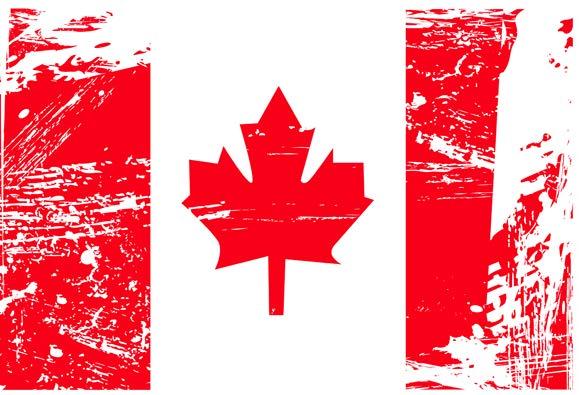
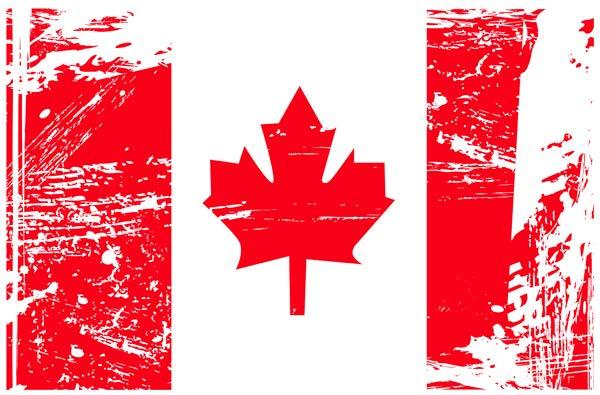

Canyon also played hockey in Nova Scotia starting at the age of four. He recalls playing centre and left wing. “I vividly remember praying and asking God if I could make the NHL,” chuckled Canyon. “I always say if I had only been more specific on making the NHL as a player, maybe not as an anthem singer (different things might have happened). Hockey still is a vital part of my life and my family.”
Canyon has lived in Alberta since 1992, currently residing in the High River-Nanton region. The country music star has had an exceptional singing career. He is a two-time Juno award winner. He won the Country Recording of the Year in 2005 for One Good Friend and in 2007 for Somebody Wrote Love.
He has also garnered seven Canadian Country Music Association awards.
In 2004, he won the Chevy Trucks Rising Star Award. In 2005, Canyon won the Male Artist of the Year, the Kraft Cheez Whiz Fans’ Choice Award, the Single of the Year, and the Society of Composers, Authors, and Music Publishers of Canada Song of the Year Award for My Name. Then in 2006, he won the award for Male Artist of the Year again and Single of the Year for Somebody Wrote Love.
In addition to his anthem singing, Canyon has acted, appearing in the recurring role of Charlie Wells on Heartland.
A long-time member of the Conservative Party of Canada, Canyon announced his intention to run for the Conservative nomination in the southern Alberta riding of Bow River in 2014, before pulling out for health reasons. In the 2019 federal election, he was the Conservative candidate in the Nova Scotia riding of Central Nova but lost to Liberal candidate and now Cabinet minister Sean Fraser.
Canyon has a strong connection to the Canadian military. He has performed the Canadian and American anthems for soldiers in Afghanistan four times and the Middle East twice. A show in Afghanistan was postponed due to rockets launching in the area. Canyon and his crew had to go to a nearby makeshift bomb shelter until the situation had settled down. He did finish his show that night.
In my previous interview with Canyon in 2008, I learned that it was his dream to be part of the air force. However, at age 14, he was diagnosed with type 1 diabetes, which disqualified him from joining. Due to his support of the military, Canyon has received significant honours, including an Honorary Colonel at Nova Scotia’s 14 Wing Greenwood in 2008 and he was named the first ever Colonel Commandant of the Royal Canadian Air Cadets in 2011.
Canyon had a greater appreciation for O Canada after his experiences in Afghanistan. “When you sing the Canadian anthem with your troops on the ground in a combat theatre, it is completely a different experience. I can definitely say that with confidence,” said Canyon. “The melody and everything takes on a holy meaning. I would say there is no spot in the anthem that stands out. You just sing the anthem with such pride, and not for yourself, but pride in your country, pride in the soldiers that are with you there. Looking at soldiers and seeing them sing the anthem back, changed everything for me and how I approached the anthem. I have always been honoured to sing the American anthem, but the Canadian anthem is always precious to me, as I am 100 per cent Canadian.”
When asked why the national anthems are an important part of the hockey experience for the spectator or fan in attendance, Canyon said, “It is a vital part of everything. In school, that is how we started the morning. We started with the Lord’s Prayer and the anthem. It was every morning. That is how you started school. Looking back as a kid, you don’t really understand. Now as an adult, when we sing the anthem before we celebrate anything in Canada, what we are doing is remembering and paying homage to those who have made the ultimate sacrifice to protect our freedoms, so that we can enjoy democracy and enjoy these freedoms. It is a sporting game we get to enjoy and be a part of. I always believe the anthem should start all events because it is a way of saying thanks.”
As for the most memorable Flames game at which he has sung the anthem, Canyon said, “There’s been a few. Anytime I get to perform with the Canadian military in attendance, I feel proud to be there with them.”
Canyon discussed how memorable and how significant it was for him to sing O Canada in the Flames’ season opener of the 2022-23 season. On this night in the Flames’ 5-3 win over the reigning Stanley Cup champion Colorado Avalanche, the Flames also honoured organist Willy Joosen, who died of cancer at the age of 68 on Canada Day of last year. Canyon sang the national anthem with an audio recording of Joosen playing O Canada in the background. Joosen was also honoured on the Jumbotron. “Knowing Willy was looking down, I could almost see him smiling as I did the anthem that night,” remembered Canyon. “That was very special.”

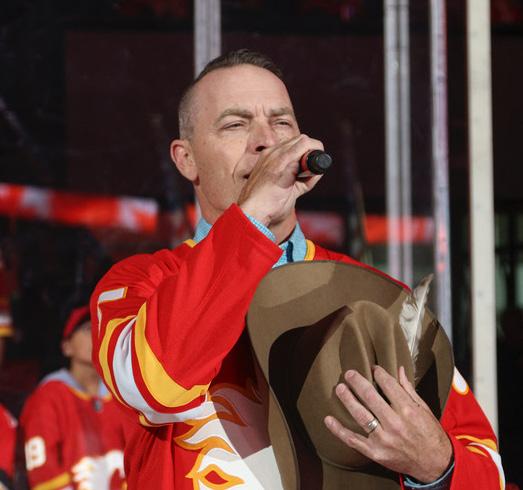
Another meaningful time for Canyon is when the Flames honour Special Olympians. “When I am out there and they are out singing with me, it warms my heart that we get to celebrate with them, their athletic accomplishments and being a part of sport.It is such a great feeling”
Canyon has received numerous awards over the years but the one that means the most to him is the Father of the Year Award he received from his kids when they were young.
Canyon is blessed to have a very supportive group around him. He may be the one at the forefront, but his wife Jennifer and crew members have vital roles as well. “I take all the awards as not an award for me, but a pat on the back for the team around me, who work so bloody hard.”
This past year Canyon’s memoir “My Country” was published. It was challenging for him, because there were a lot of interesting stories that did not make the book. If they had, My Country would have been 12,000 words and, he said, “it would have been longer than War & Peace.”
“I also narrated the audio book, which was a blast and very emotional,” said Canyon, who encourages everyone to write a memoir. “For no other reason but to leave something for your children and grandchildren, as a legacy of their life and what they experienced. When you do that, you really get to look back at your life and the things you might have forgotten or things that went to the wayside in your mind. Some of it is good and some of it is really painful. I think it is an important exercise for everyone to do.”
Canyon will be on the road until March 22 for his “Our Country” tour performing throughout Canada. He will be in Red Deer at Bo’s Bar on March 13 and in Lethbridge at Yates Memorial Centre on March 14.
Canyon said he is done setting goals. “I have stopped doing that. I am grateful for every day. I get to make music. I get to ranch. I get to sing for the Calgary Flames! Oh man, I am grateful.”
When I am out there and they are out singing with me, it warms my heart that we get to celebrate with them, their athletic accomplishments and being a part of sport. It is such a great feeling.
Over the last decade we have featured several high-performance women’s hockey players who have Calgary connections. We thought it would be a good time now to feature the Calgary female hockey program at the grass roots level. On February 9, we spoke to Shannon Cleary, president of Girls Hockey Calgary, Alberta’s largest female hockey association. In 2021-22, the association had a total enrolment of over 1000 female hockey players.
Girls Hockey Calgary was founded in 1988 by former Canadian national women’s team Head Coach Shannon Miller and fellow hockey coach Suzanne Jackett. In the early days, Miller and Jackett received significant assistance from many others, including Marilyn Wickenheiser, the mother of Canadian hockey icon Hayley Wickenheiser. Girls Hockey Calgary’s first team was the GHC Pee Wee Cougars, which started with 12 players during the 1989-90 season.
In the early days, Girls Hockey Calgary received support from many community associations across the city, and by 2005, became self-sufficient, and was able to function as an individual entity. Currently, there are two separate programs within Girls Hockey Calgary—the Junior Inferno and the Calgary Fire.
There are 50 teams in six age levels (under-7, under-9, under-11, under-13, under-15, and under-18) that are part of the Junior Inferno program. The teams compete in Hockey Calgary co-ed and female divisions. Over the years, the Junior Inferno received significant support from the Calgary Inferno of the former Canadian Women’s Hockey League. The Inferno were part of the CWHL from 2011 to 2019 when the league folded.
The Junior Inferno program is “the traditional minor hockey experience,” explained Cleary, and “there are different divisions within those age categories. They play your traditional minor hockey season, league games, and tournaments, and what a typical minor hockey experience would be in smalltown Canada.”
The Calgary Fire is the elite program of Girls Hockey Calgary. This season there are two Calgary Fire teams in the U15 AA division, two Calgary Fire teams in the U18 AA division, and one Calgary Fire team in the U18 AAA division. All five Fire teams play in the Alberta Female Hockey League.
The 2023-24 season will be very exciting for Girls Hockey Calgary, as more opportunities will be on the way for elite players. A provincial-wide U13 AA division is being created with three Calgary teams participating. The U15 AA division is also expanding. They will have three Calgary teams, after having two teams in Calgary this season. This means that there will be nine Fire teams in the AFHL.
Cleary calls the additional opportunities made available through Hockey Alberta’s Elite Female Hockey Committee extremely significant.
“This is huge,” beams Cleary. “The talent of female hockey players has always kind of been there, but in a way, they have had to seek it out in different areas. They stayed all-female, or they go co-ed. This way there is a system that is meant for their specific pathway to elite. (Expansion and growth) is something Calgary probably should have done. We have been kind of bursting at the seams with a lot of our talent. It is one of the best provinces in the country to play hockey in. We have the legacy of the national women’s program, and the legacy of the Inferno (in addition to the Oval Xtreme). There are just so many incredible hockey builders here in Calgary, and the female stream really has been exploding. To be able to add those elite opportunities and give space to those girls who already deserve it, is really exciting.”
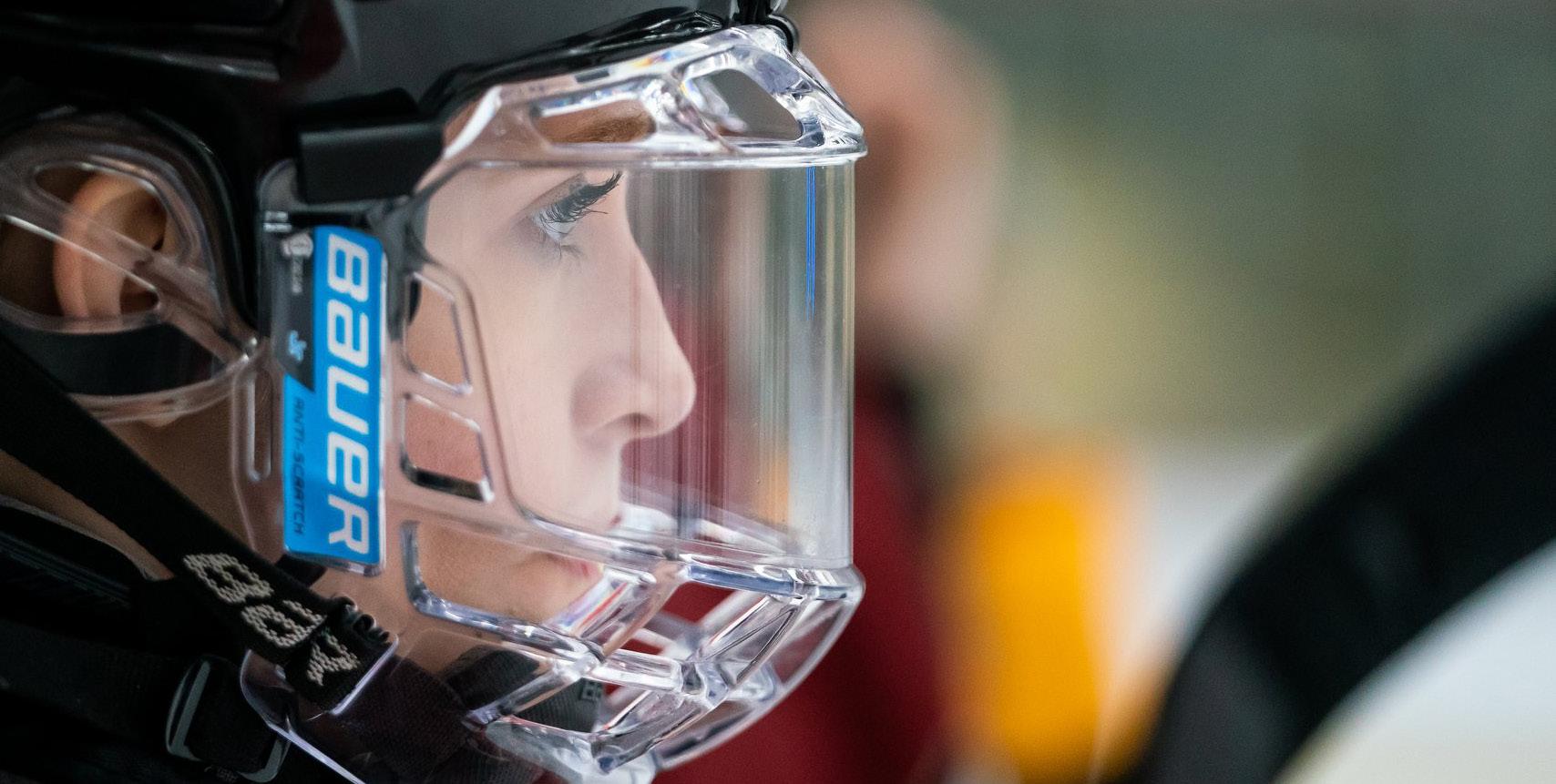
Cleary is extremely grateful about how Calgarians have supported girls hockey from a volunteer standpoint.
“Being able to operate the minor hockey association just in general, whether it is male or female requires so many selfless, amazing kinds of people. We’re so lucky. We always say at Girls Hockey Calgary we have the best volunteers in the city. I really feel like the volunteerism in our Calgary is amazing and at GHC we feel especially lucky to have so many people that support the crazy operational demands that it requires.”
A challenge for Cleary and Girls Hockey Calgary is to convince elite young girls to play in the all-girls leagues, rather than choosing the co-ed option.



“We are trying to carve out our piece,” explains Cleary. “We are trying to convince young girls that ‘hey, you can go just as far playing female hockey than anything else. This is where we want you to thrive.’ That part of it too is a little bit of an undertaking from time to time because you have to in a way, advocate for the female stream. You have to advocate for the visibility of how successful you can be as a female athlete playing on an allfemale team. It is definitely a big undertaking.”
Having a girls hockey association is vital to the overall growth of female hockey in Calgary, says Cleary. “I find it funny that hockey is tethered so much to what is happening on the male stream, where in so many other sports, there is not this constant comparison.”

She added, “Girls do not have to feel like they are tethered to what the male stream is doing. It is very important to have an association built for them. I find hockey kind of funny in the sense that even though hockey is arguably the most popular sport in our country, the female side just hasn’t been able to break away from the constant comparison to the male side.”
The intent is to address the needs of the female hockey player. “All the kinds of things that we do with our coaches, and all the kinds of things that we do with our off-ice resources, it is all focused on what the needs of female athletes are. It is okay that it’s different sometimes than what motivates male athletes. What I really like about our growth is that it is organic. A lot of the girls in the co-ed stream find out there is an all-female option. Once they are connected to the female stream, then they see a female role model.”
The girls hockey association strongly supports mentoring. They encourage younger female hockey players to go out and watch some of the older girls’ games, so they can learn to be even better hockey players.
At the present time, the primary focus for the girls hockey association is to try and get more players involved, and the game more accessible to all girls who want to play hockey.
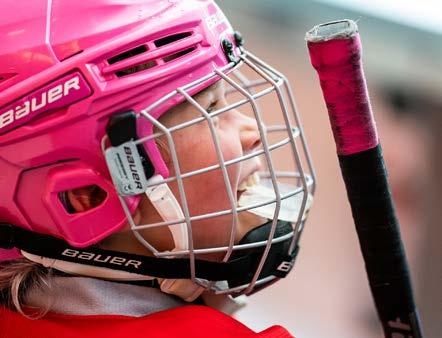
September 1, 2019 was an historic day in Girls Hockey Calgary history. On this day the city of Calgary awarded the Calgary Fire U18 AAA Team their first dressing room, training room and coaches’ office at Father David Bauer Arena.
“It is important for female athletes to have their own space and pathway through the system,” said Cleary. “I think at times it becomes a touchy subject. If the architecture meets the players’ needs, then that is where we have to keep on moving the game forward.”
Cleary says the future goal for Girls Hockey Calgary is to create an environment for girls that is “fun, safe, and appropriate” for them to play hockey. Cleary would also like to see an U-21 division created, and more collaboration between Girls Hockey Calgary and other girls hockey organizations in Alberta.
For more information about Girls Hockey Calgary please go to the website, www.girlshockeycalgary.com,or email at admin@girlshockeycalgary.com
It is extremely important because there are so many needs of female athletes that we can meet when we have an association that is built to support them.Photos courtesy of Dave Holland

The Calgary Hockey Magazine is distributed to all of the below listed Calgary arenas. The magazine is also available at all Safeway, Sobeys, and Co-op locations.


At the age of 16, Tyler McGregor of Forest, Ont., was an elite hockey prospect. Ontario Hockey League scouts were interested in McGregor’s overall skillset, and it appeared to be just a matter of time before he would be battling for an opportunity to play for the Memorial Cup and beyond.
However, while playing in the minor midget level with the Huron-Perth Lakers, McGregor broke his tibia and fibula after receiving a bodycheck. Initially, his rehabilitation went well and he was walking and then skating within a month of the surgery. During his recovery however, McGregor noticed a bump just below his left knee. An X-ray showed the bone in the area was gone. He was diagnosed with a form of cancer called spindle cell sarcoma and it would not be long before doctors determined there would be no other option but to amputate his leg.


McGregor was heartbroken. Most teenagers with his overall skillset have National Hockey League dreams. However, it would not take long before he made the successful transition to para ice hockey. He started playing the sport at age 17 and was on the Canadian National Para Ice Hockey Team by age 18 in 2012.
McGregor’s para ice hockey resumé over the last decade has been impressive. It includes two gold medals at the International Paralympic Committee Ice Sledge Hockey World Championship.
Both medals were earned in South Korea, the first in Goyang in 2013 and the second in Gangneung in 2017.
McGregor has also won three medals at the Paralympic Winter Games—a silver in 2018 in Pyeongchang, a silver in 2022 in Beijing, and a bronze in Sochi in 2014. He has also won three additional silver medals at the World Championship—2015 in Buffalo and in 2019 and 2021 in Ostrava, Czechia.
In three Paralympic Winter Games, McGregor has 13 goals and 11 assists for 24 points in 14 games. McGregor led Team Canada in scoring at the last two Paralympic Winter Games with eight goals and five assists for 13 points in 2018, and then five goals and three assists for eight points in 2022.
At the World Championship level, he has 28 goals and 17 assists for 45 points in 27 games.
McGregor, who is now the captain of the Canadian team, is the heart and soul of the Canadian men’s national para ice hockey program. That is not the only thing he has been known for over the last two years. In 2021, McGregor raised more than $30,000 for the Terry Fox Foundation by skating his para ice hockey sledge 25 kilometres along the Woodview Mountain Skating Loop in Blue Mountain, Ont.
Now McGregor is taking his fundraising efforts to a higher level. Beginning in January of 2023, McGregor is skating his sledge 42 kilometres in every province across Canada, with the hopes to raise $100,000. The amazing program is called the Sledge Skate of Hope.
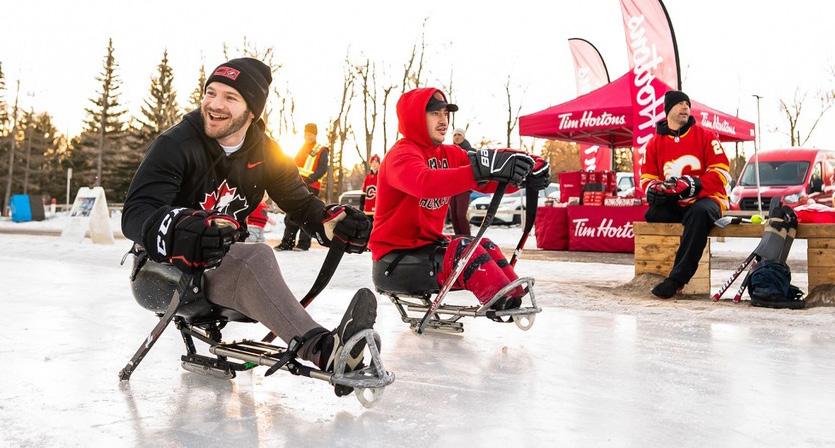

On Jan. 21, I had the pleasure of interviewing McGregor at Calgary’s Bowness Park after Tyler had just finished sledge skating 41 kilometres. (He skated his 42nd kilometre later that day at Calgary’s Scotiabank Saddledome in the second intermission of the Hockey Day in Canada game between the Calgary Flames and reigning Stanley Cup finalist Tampa Bay Lightning.) During the morning, he was accompanied by Calgary Flames alumni Jamie Macoun and Mason Raymond, along with his para ice hockey teammate Chris Cederstrand of Calgary, and former Montreal Canadiens draft pick Brad Layzell.

The Sledge Skate of Hope program is inspired by Canadian marathon runner Terry Fox, who like McGregor, had cancer in his leg and needed to have his leg amputated. Over 143 days in 1980, Fox ran 5,373 kilometres (an average of 38 kilometres a day), starting in St. John’s, Newfoundland, before finishing in Thunder Bay, where he was forced to end his quest to run across Canada because the cancer had spread to his lungs.
“I have been inspired by Terry Fox since I was a young kid, and even far before I was diagnosed with cancer, and lost my leg,” said McGregor. “I went through similar circumstances to him. Following my diagnosis, I was given an 80 per cent chance of survival, with a similar type of cancer that Terry Fox had. He was given a 20 per cent chance. That is an example of how far cancer research and awareness has come, thanks to organizations like the Terry Fox Foundation, and many others.”
McGregor has played hockey since he was three years old. Leading up to the cancer diagnosis and before he broke his leg, he had been experiencing some pain in his shin for approximately four months. However, he was training hard at the time and thought that was part of taking his exercising regime to the extreme. One thing I instantly found out from Tyler is how special hockey has become part of his life.
“In many ways it is kind of what saved me, being diagnosed with cancer and losing my leg,” he said. “I remember being in the hospital. It is one thing that helped me through and helped me keep positive, especially being surrounded by teammates in the hockey community. Once I regained my health, hockey helped me regain my sense of identity and sense of direction. It has been part of my life forever, pretty much. It has been incredible. I am very, very grateful to have had the opportunity to play.”
Hockey helped me regain my sense of identity and sense of direction. It has been part of my life forever, pretty much. It has been incredible. I am very, very grateful to have had the opportunity to play.
After losing his leg, McGregor tried playing hockey with a prosthetic limb, but realized he could no longer play at an elite level. This was something that para ice hockey was able to provide him. “I transitioned to para ice hockey and have felt very fortunate to have played on the national team now for the last 10 years,” he said. “My best experiences are the two world championships that we won in 2013 and 2017. It is incredible to be able to share those moments with your best friends and teammates, and then come home and share it with your family. Those stand out.”

McGregor is excited to see the growth in para ice hockey with more nations forming national teams. The level of interest in South Korea has grown exponentially. At the time of the 2013 IPC World Championships in Goyang, there were 15 to 20 spectators. Then at the 2018 Paralympic Winter Games in Pyeongchang, games were played to capacity crowds of 10,000 fans.

McGregor is also excited that the quality of play of para ice hockey is continuing to grow, with more skill level, physicality, and speed. In the future, he would like to see games have 20-minute periods like hockey compared to 15-minute periods. He would also like all medal-round games in competition to not have the shootout.
One thing that has still eluded McGregor is a gold medal at the Paralympic Winter Games. In order to accomplish that goal, he knows that efforts need to continue to grow para ice hockey at the grass roots level. McGregor would like to actively participate in growing para ice hockey as a whole.
For those interested in more information about the Sledge Skate of Hope initiative, or how to make a donation, please go to sledgeskateofhope.com.


Perfect Skating came to Calgary this past April and has been enthusiastically delivering their proven program of instruction ever since. Several characteristics define the Perfect Skating approach. First the instructional methods have been developed from a kinesiology basis and have been refined over 15 years. In fact, Perfect Skating was sought out by CCM as a partner in skate and equipment design in their 3D motion capture facilities. Perfect Skating is also the on-ice training partner of the highly regarded Gary Roberts Performance group who NHL players turn to for off-season training.
Second, training is completed at 4:1 player to instructor ratios, they pride themselves on providing athletes with an individual focused experience that not only advances one’s development but also teaches fundamentals that develop the ability of a player to self-correct. Finally, Perfect Skating instructors have lived the modern individual skills development path that’s required to be an elite player. Hockey has changed a lot in recent years and the instructors bring this experience to the ice as well as elite player services.
During his time working with the Nashville Predators, Shawn Allard, the founder of Perfect Skating and the team undertook a comprehensive video study that led to the creation of opportunities in both defensive and offensive scenarios. What they found was that gameplay within a radius of about 3 meters were critical to puck touches thereby allowing players to dictate play. Over the past ten years the program has continued to evolve by including the most recent movement patterns that bring success at the highest levels of the game.
The Small Area Movement (SAM) program focuses on individual stick skill development with the goal of producing intense and skillful changes of direction that become innate to a player’s decision making. Executing movement sequences with maximum speed and competence produces a much more effective gameplay when compared with the mental speed of ‘read and react’. Proficiency with a movement sequence requires the player to be capable of the required skating and stick skills as well as dealing with pressure and available play options. Players in the Small Area Movement program gain movement competency, enhance speed and quickness and develop their ability to dictate play in offensive and defensive scenarios.
Perfect Skating offers players the ability to improve through the technical instruction of skating to improve range of motion and joint stability throughout a purposefully designed breakdown of hockey skating. Gaining a full range of capability throughout the range of modern hockey skating is critical to development of the stick skills present in the Small Area Movement program. The combination of the two are the ideal combination of individual skill development to support a player’s progression.
The Elite Player Development program follows. It provides players the opportunity to work in offensive or defensive specific groups of four with coaches who’ve lived the modern development pathway that leads to the highest levels of the game.
Name:
Age:
If your child won a gold medal at Esso Calgary Minor Hockey Week 2023, we want to hear from you! Please complete the following questionnaire and send it in by April 30th, 2023, and your child could be featured in our next edition of the Calgary Hockey Magazine!
If your child won a gold medal at Esso Calgary Minor Hockey Week 2023, we want to hear from you! Please complete the following questionnaire and send it in by February 15th, 2023, and your child could be featured in the 2023 spring edition of the Official Calgary Hockey Magazine!
Send in completed entries, along with a photo (preferably in a hockey uniform) to:
Send in completed entries, along with a photo (preferably in a hockey uniform) to:
Current Team:
Number of Years Played:
Usual Position:
Favourite Hockey Team:
Favourite Hockey Player: Who is your Role Model:
Other Hobbies / Interests:
Favourite Hockey Memory:
School Grade:
publisher@hockeymagazine.net
publisher@hockeymagazine.net

AGE: 12
YEARS PLAYED: 9
SCHOOL GRADE: 8
CURRENT TEAM: Crowfoot Coyotes U13 - 2
POSITION: Centre
ROLE MODEL: My dad & Nazem Kadri
FAVOURITE HOCKEY
PLAYER: Nazem Kadri
OTHER HOBBIES & INTERESTS: Volleyball, Baseball
FAVOURITE HOCKEY
MEMORY: Hands down Esso Minor Hockey week 2023 Winner!

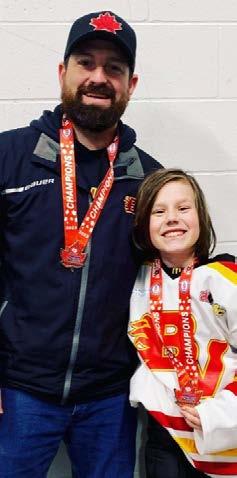
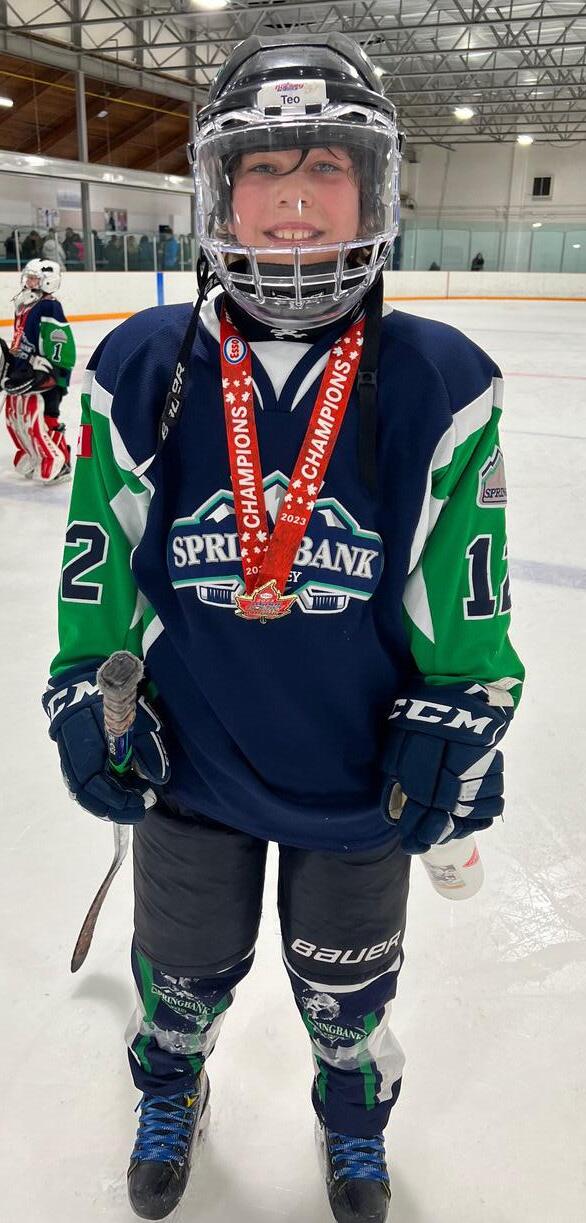
AGE: 9
YEARS PLAYED: 5
SCHOOL GRADE: 4
CURRENT TEAM: Springbank Rockies Div 4 Blue
POSITION: Centre
ROLE MODEL: My cousin Henry
FAVOURITE HOCKEY
TEAM: San Jose Sharks
FAVOURITE HOCKEY
PLAYER: Tyler Toffoli
OTHER HOBBIES & INTERESTS: Volleyball, Baseball
FAVOURITE HOCKEY MEMORY: One timer and scored a goal!
AGE: 12
YEARS PLAYED: 5
SCHOOL GRADE: 7
CURRENT TEAM: Glenlake Hawks
POSITION: Defence
ROLE MODEL: My dad
FAVOURITE HOCKEY
TEAM: Calgary Flames
FAVOURITE HOCKEY
PLAYER: Elias Lindholm
OTHER HOBBIES & INTERESTS: Playing with friends
FAVOURITE HOCKEY
MEMORY: Winning Esso
Minor Hockey Week!
AGE: 10
YEARS PLAYED: 7
SCHOOL GRADE: 5
CURRENT TEAM: Bow Valley U11 Div 2 Black
POSITION: Defence
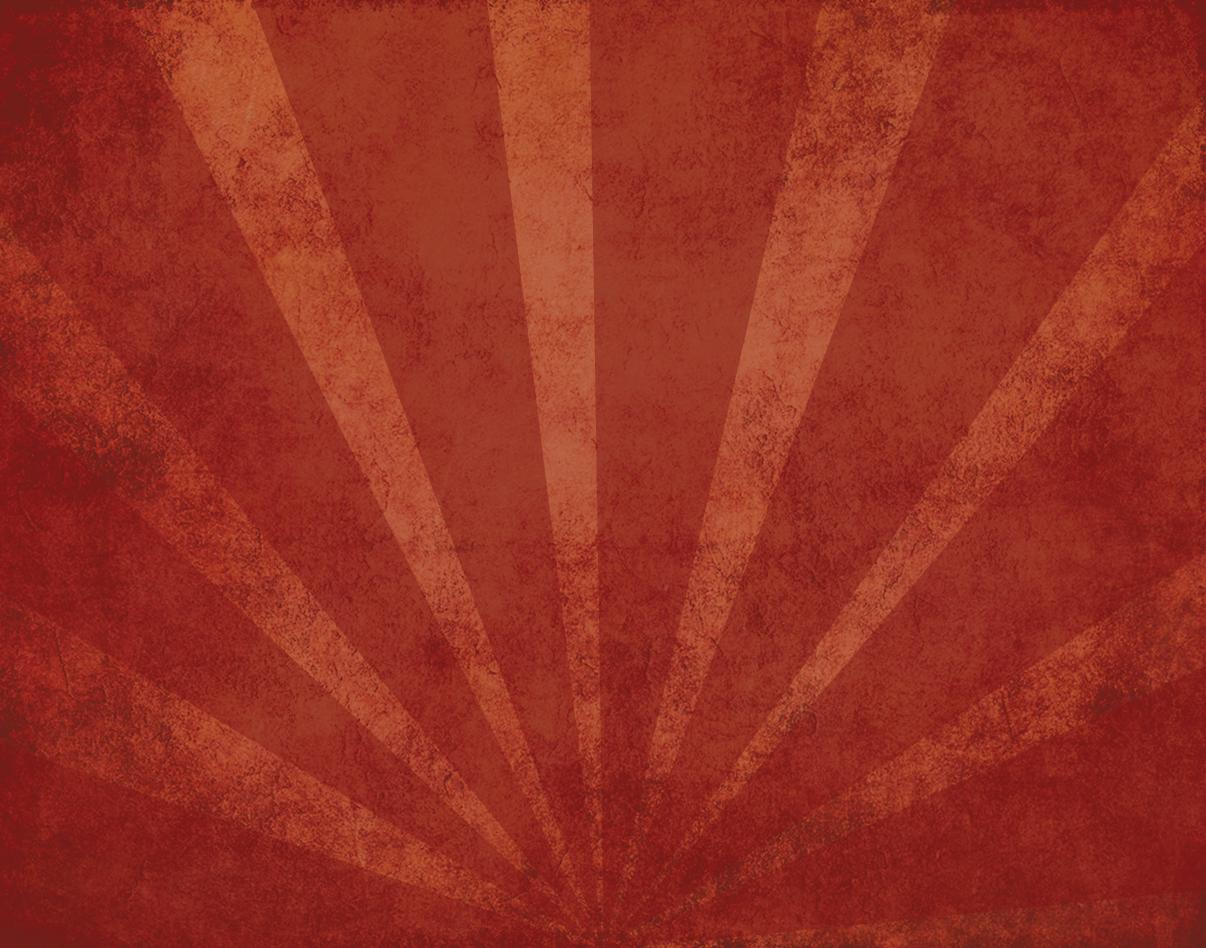
ROLE MODEL: My Grampa
FAVOURITE HOCKEY
TEAM: Edmonton Oilers
FAVOURITE HOCKEY
PLAYER: Connor McDavid
OTHER HOBBIES & INTERESTS: Model Trains
FAVOURITE HOCKEY
MEMORY: Winning Esso
Minor Hockey Week and meeting my friends in U9



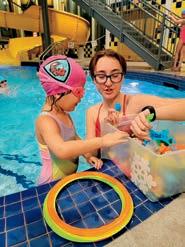
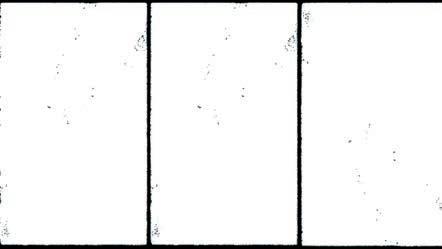



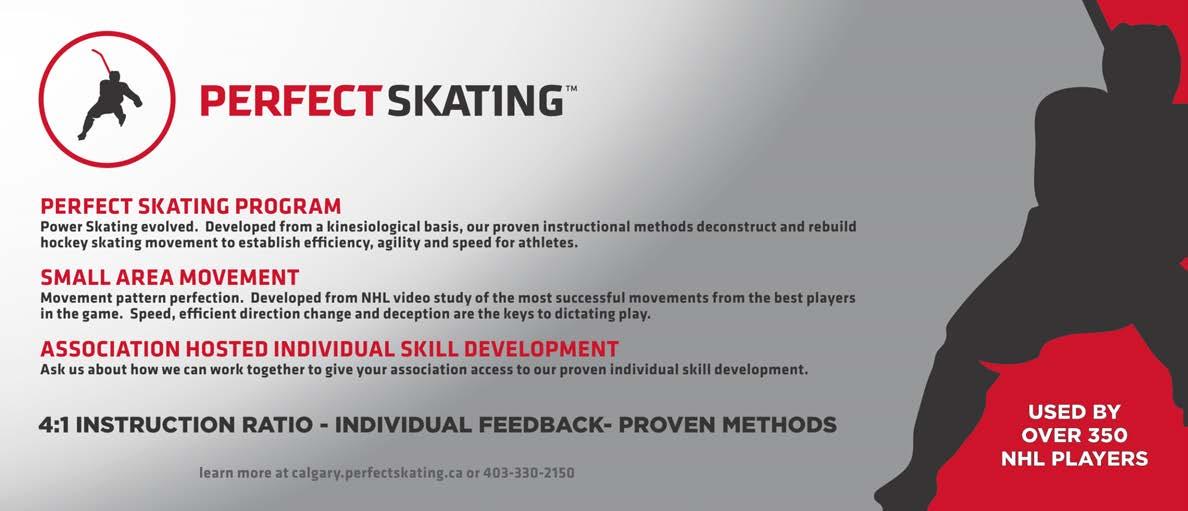

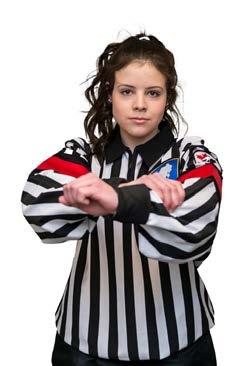
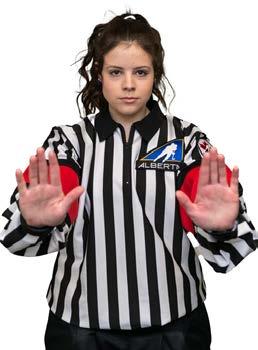
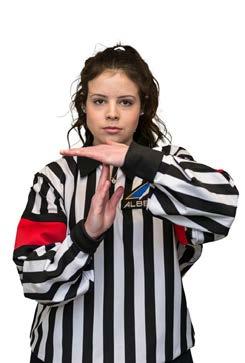
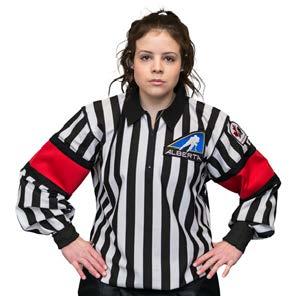
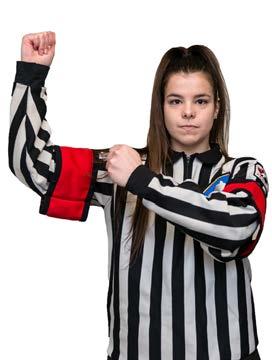

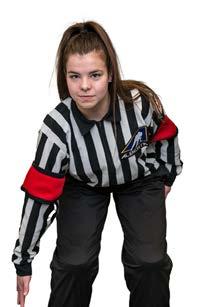
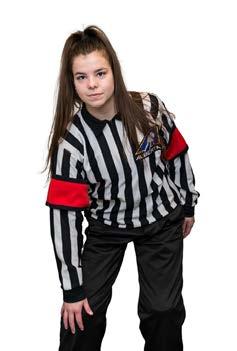
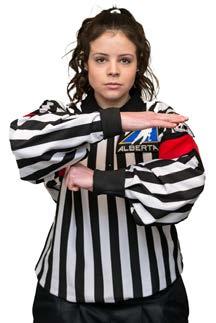
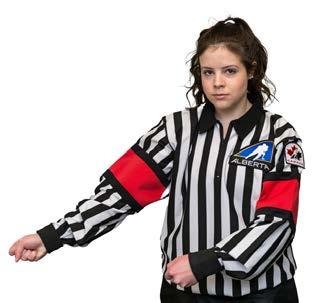
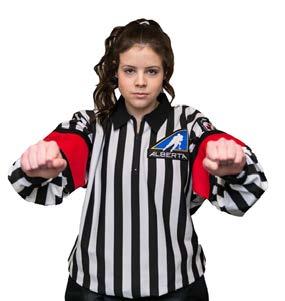


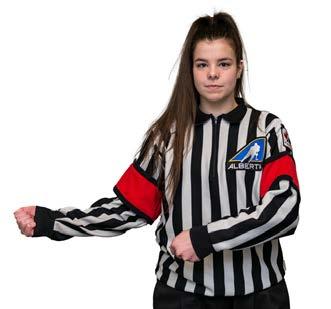
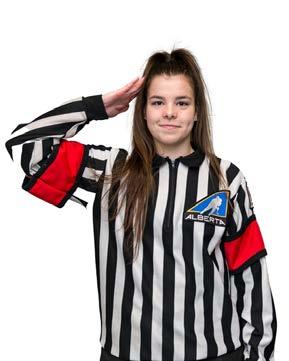

HOOKING
INTERFERENCEKNEEINGMISCONDUCT
SLASHINGSPEARINGTRIPPING
















